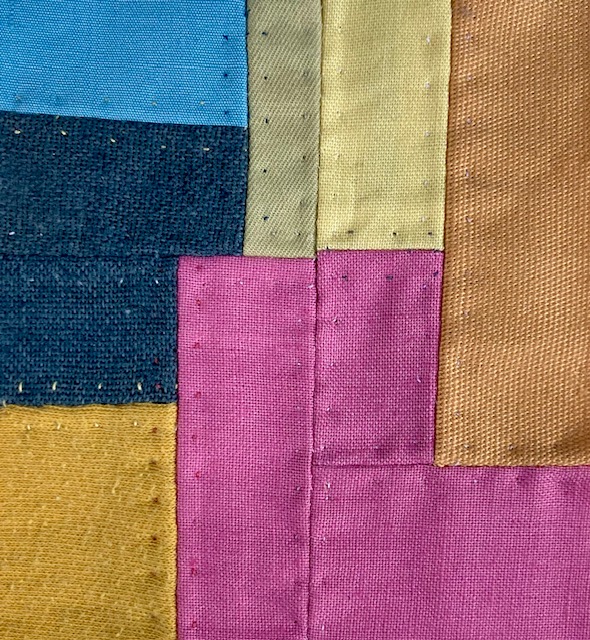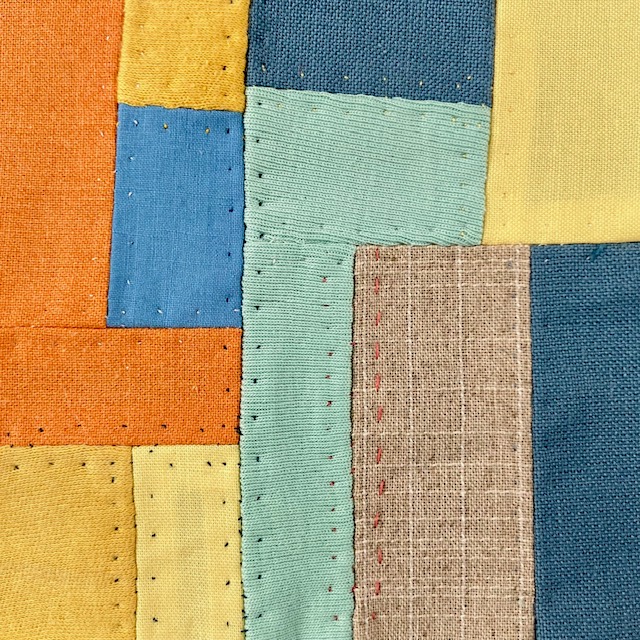
How I keep up with the 100 days project
Over the past few years, I have regularly wondered if I would also join the 100 days project. It seemed like a lot of fun but I saw many artists working on quite time-consuming projects and that kept me from starting myself.
The 100 days project is a global art project that takes place online. I know about it through artists I follow on Instagram. Every year, thousands of people participate, doing something creative for 100 days in a row. This can be anything; painting, drawing, collage, writing, embroidery, quilting, cooking, baking, you name it.
This year, the week before it began, I came up with an idea that particularly appealed to me for its practicality. I would make a hand-sewn seam for 100 days, every day. This seemed manageable and achievable. I started with a healthy dose of curiosity and began the project without too many expectations. I have now reached day 75 and I think I will make it to the finish line.


4 tips to keep up
1. Minimal effort
I opted for minimal effort per day. This does not sound very challenging but it is the main reason why I am still participating. I chose a creative act that I can achieve in very little time. In fact, making a seam takes me no more than 5 minutes. Choose two fabrics, thread a needle and 5 minutes later it’s done. Because it takes so little time, I can easily catch up a day or work ahead if needed.
2. Allow change
Furthermore, it is important to let your project change with your ideas. After about 15 days, I realised, that although I had chosen the hashtag #oneseamaday, my project wasn’t actually about making a seam. I was more concerned with the colours of fabric I used and had placed against each other and what colour of thread I used to sew the patches together. So it was actually about colour! When I discovered this, it relieved me from the obligation to experiment with all kinds of seams and, above all, to go ahead and choose different colours of fabric. A few times in the process I changed my approach a little, most of the time to enable some new energy in the project.
3. Ignore your inner critic
Ignore negative thoughts. Many times during the project, I suffered from my inner critic, who mainly thought that my project was boring and lacked challenge. My advice is to ignore these thoughts for the most part, although sometimes they were the trigger to make a small change.
4. Write!
Write (occasionally) about what you are doing and your thoughts about it in a notebook or journal. This helped me realise that negative thoughts are part of it all and that continuing with the project, being curious and open about what I was doing, helped me best to move forward.


Smart or lazy?
Is participating in the 100-day project in this way smart or lazy? Of course, that is open to debate. Most of all, I like the fact that I participated. It is not yet accomplished, but I have already gained some insights.
- I have created new building blocks for later work.
- I have discovered that with regular small steps I can sometimes do more than I think.
- I have gained new ideas.
- Maybe, if I keep going a bit longer, I will have added some smaller pieces to my collection.
All together, I think this is already a great result!
If you enjoyed reading this, you might also like reading about my scrapconstructions.
If you want to know more about my journey of discovery in making textile art, you can also subscribe to my (irregular) newsletter.
Leave a Reply